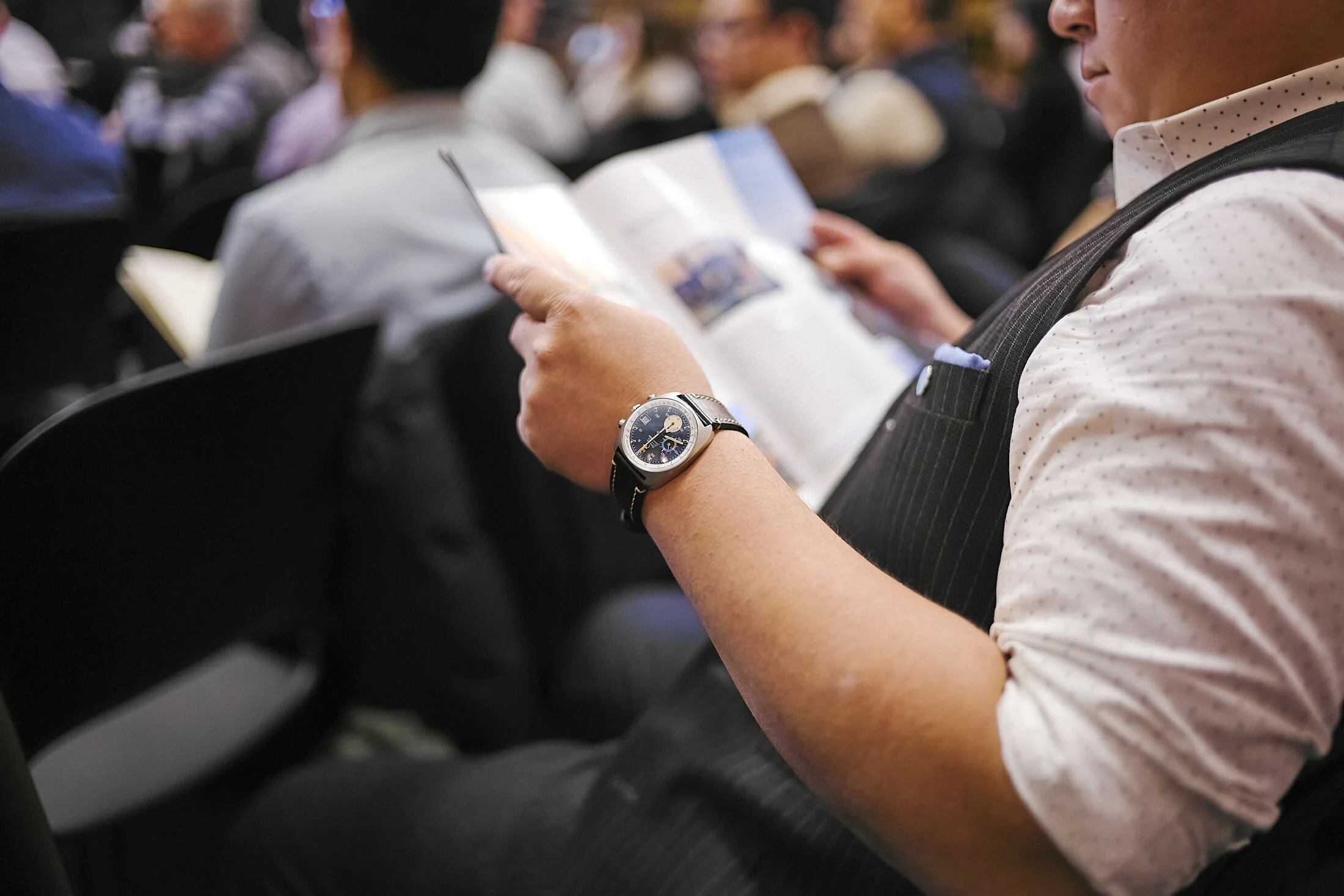Meeting Recap: OMEGA Speedmaster: The Evolution of Calibers 321 and 861
Bernhard W. Stoeber, CW21
January 6, 2020
Video recordings of lectures are available to members immediately (using your membership password), and to the general public with a 2 month delay.
On January 6, Bernhard Stoeber kicked off the 2020 HSNY lecture series about the changes of the Omega Speedmaster chronograph Caliber 321 and Caliber 861.
Stoeber introduced the discussion with a brief history of the chronograph (including the Greek roots of the word - chrono = time / graphein = to write) and its association with key individuals such as George Graham, Nicolas Rieussec and Aldophe Nicole; and an explanation of why Valle de Joux was the cradle of complicated watchmaking due to its location, climate and people. Throughout the years, the chronograph experienced some notable changes:
1860s — Chronograph function under the dial
1880s — Chronograph function located on the movement side
1910 — First wristwatch chronograph with a one push button
1934 — Chronograph with two push buttons
The association of Omega and Lemania started in 1932 when Lemania joined SIHH (Societe Suisse de l’Industrie Horlogère) along with Tissot. In 1940, Omega stipulated that Lemania produce and develop a 27 mm chronograph with a minute and 12-hour counter. So, between 1941-1943, the calibers 27 (Omega 320 was only a minute counter) and 27CH (Omega 321 was a minute and 12-hour counter) were created. Albert Piguet and John Hasler worked on the calculations, whereas Jacques Reymond provided the drawings.
Throughout the lecture, Stoeber pointed out the following events with the Omega chronograph:
Evolution of the early Speedmaster - such as the 1959 Lollipop (Ref. CK 2998)
The key changes of the CK 2998 reference
Transition of the Speedmaster to Caliber 861
Then came the subject the audience was eagerly waiting for: Omega’s partnership with NASA. In 1964, NASA needed a standard issue chronograph for all of its manned space flights and sent a request to Hamilton, Omega, Rolex and Longine to submit 12 chronographs of the same model to undergo the following tests: Heat, Cold, Vacuum, Humidity, Corrosion, Shock, Acceleration, Decompression, Pressure, Vibrations and Sound. What was interesting is that Omega did not find out until a year later (from a magazine advertisement) that NASA had used their chronograph. Then each year, NASA would send about eight to 12 Speedmasters for servicing and calibration; in which Stoeber had the opportunity to work on as the final Quality Control at the Omega workshop.
HSNY thanks Bernhard Stoeber for his fascinating lecture!


















Photography by Atom Moore
Submitted by Melody Benloss, Recording Secretary & Associate Librarian